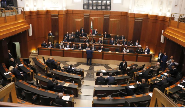
A powerful sandstorm is sweeping across Lebanon, turning skies hazy and covering major regions—including the Bekaa, Tripoli, Beirut, and Saida—in a dense layer of dust. Visibility has dropped dramatically, and the entire country feels cloaked in a golden fog.
Where’s It Coming From?
This storm is the result of a collision between a low-pressure system over the eastern Mediterranean and a high-pressure front moving in from North Africa. The outcome? Strong southwesterly winds—some reaching up to 95 km/h—that are hurling dust and sand from the region’s arid zones straight into Lebanon.
How Long Will It Last?
Meteorologists say the storm should start to ease by Thursday, April 24, but until then, residents are urged to take precautions—especially those with respiratory issues.
Health First: What You Should Know
If you suffer from asthma, allergies, or any breathing-related conditions, experts strongly recommend staying indoors. Here’s what you can do to protect yourself:
-
Shut all windows and doors
-
Run air purifiers or ACs in internal circulation mode
-
Avoid outdoor exercise to reduce the risk of respiratory stress
-
If you must go outside, wear an N95 or FFP2 mask, and remember to wash your face and hands regularly
A Word to Drivers
Poor visibility means dangerous roads. Drivers should:
-
Use fog lights and reduce speed
-
Keep a safe distance from other vehicles
-
Keep car windows closed and use internal air recirculation
These precautions aren’t just about comfort—they’re crucial for protecting vulnerable groups, like children, the elderly, and those with existing health conditions.
As the storm settles, let’s all take a breath—safely and indoors.




Comments